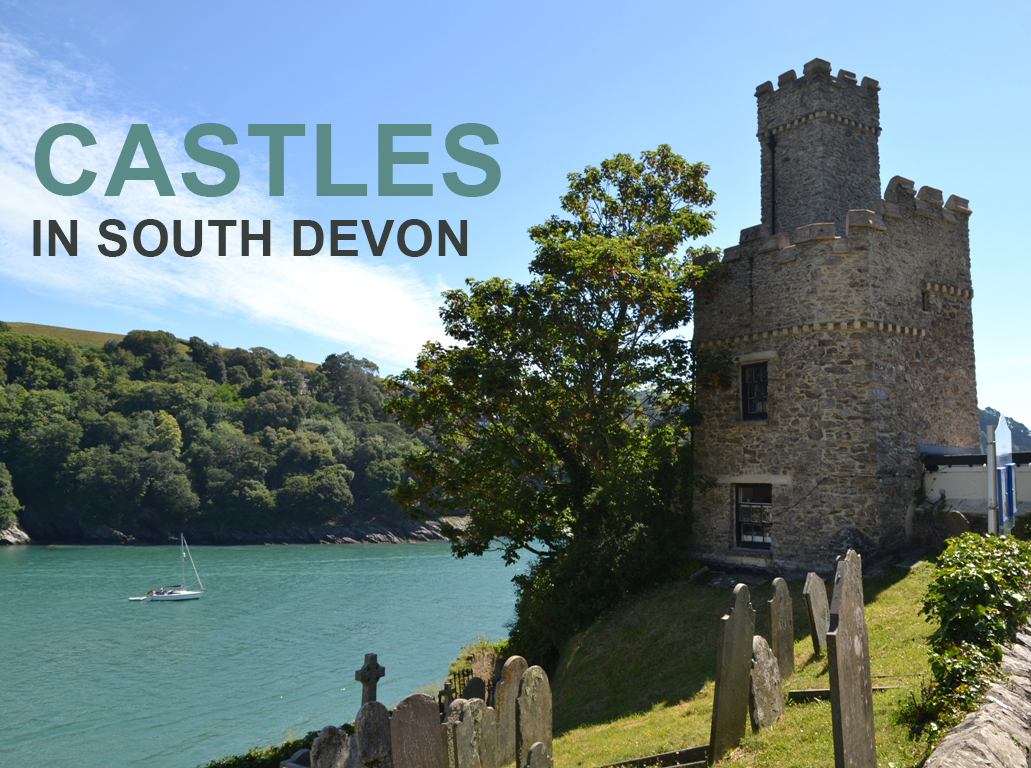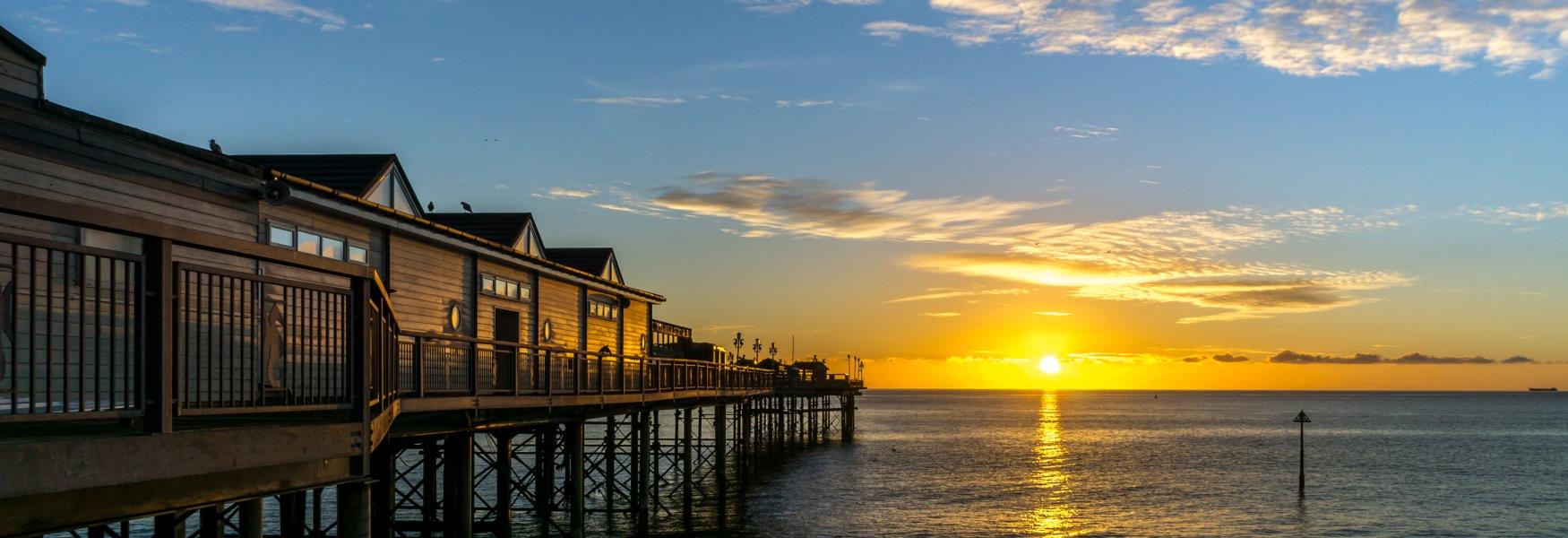 Whether defending the land from sea invasions, historical defences of hilltops and towns or fortified manor houses, there is a surprising number and variety of castles to be found throughout South Devon. So whether it’s coastal fortifications at Dartmouth, ruins surrounded by Dartmoor National Park’s moorland or an ancient site in the heart of a historical town like Totnes, you won’t be short of a castle or two to learn about in South Devon.
Whether defending the land from sea invasions, historical defences of hilltops and towns or fortified manor houses, there is a surprising number and variety of castles to be found throughout South Devon. So whether it’s coastal fortifications at Dartmouth, ruins surrounded by Dartmoor National Park’s moorland or an ancient site in the heart of a historical town like Totnes, you won’t be short of a castle or two to learn about in South Devon.
Below you’ll find an overview of the wide range of wonderful, fascinating and enchanting castles in South Devon.
Totnes Castle
On a large hill, guarding the approach of three valleys, overlooking the riverside town of Totnes is the one of England’s the best preserved examples of a Norman motte and bailey castle.
The first castle to stand on the site is believed to have been built around the late 11th century following the Conquest and the first stone keep and walls were built some years later. By 1326 the castle had fallen into ruin, royal order repairs of the fortifications were made and a new shell keep and stable were constructed, before it fall in to disrepair again following the Wars of the Roses. Discover more about Totnes Castle here.
Dartmouth Castle
For over 600 years the mouth of the Dart Estuary and the busy, vibrant port has been guarded by Dartmouth Castle.
The privateering Mayor of Dartmouth, John Hawley started the building of the defences in 1388, with the impressive gun tower added about a century later. The castle saw action during the Civil War and continued in service right up until the Second World War. Further up-dating to the castle during this time included the 'Old Battery', guardrooms and a maze of passages.
Now managed and run by English Heritage, the complex also includes the Church of St Petrox and a riverside tea room for light lunches and snacks. For more details about Dartmouth Castle, please click here.
Kingswear Castle
As the new castle in Dartmouth was being built in 1481 a castle was also built in Kingswear, on the opposite side of the river mouth, to support its defence of the harbour. Kingswear Castle was completed in 1502 and together the two castles represented the most advanced military design of their day.
Within 50 years of its construction the castle was redundant, only being manned at times of war. It was left to decay until it was rescued and turned into a summer residence in 1855 and it is now used as a holiday let. Further information about Kingswear Castle can be found here.
Berry Pomeroy Castle
Tucked away in a deep wooded valley, less than two miles from Totnes, Berry Pomeroy Castle was built as the home of the de la Pomeroy family in the late 15th century before being sold, along with the park and manor of Berry Pomeroy, to the 1st Duke of Somerset in 1547.
The castle was ambitiously enlarged from around 1600, with the intention of becoming the most spectacular house in Devon. It was never completed and by the late 17th century it was abandoned. It was considered a romantic ruin by the Victorians, today it is maintained by English Heritage and is considered one of the most haunted castles in Britain. Find out more about Berry Pomeroy Castle here.
Okehampton Castle
To the north of Dartmoor are the remains of the largest castle in Devon. Soon after the Norman Conquest, between 1068 and 1086, Okehampton Castle was built as a motte and bailey castle with a stone keep, before being converted by the Earl of Devon into a sumptuous residence in the 14th century. The castle declined into ruin from 1539 after the last owner was executed by Henry VIII.
Okehampton Castle is another castle maintained by English Heritage, as well as the ruins to explore there are beautiful woodland walks and picnic areas nearby. Additional details about Okehampton Castle is available here.
Powderham Castle
Powderham Castle is a fortified manor house located about 6 miles from the city of Exeter, on the banks of the River Exe.
It became and still is, the seat of the Courtenay family, Earls of Devon in 1556; the Earls of Devon were seated at Tiverton Castle prior to this. The castle was expanded and altered extensively in the 18th and 19th centuries, most notably by James Wyatt in the 1790s.
The building is Grade I listed and the park and gardens are Grade II* listed in the National Register of Historic Parks and Gardens. The house and gardens are open as a visitor attraction and wedding venue. Learn more about Powderham Castle here.
Compton Castle
Today Compton Castle is the home of Geoffrey and Angela Gilbert and their family, but the land was originally held by the de Compton family.
Compton Castle was first a manor house, which was enlarged in the 1450s. Following the French raids on Plymouth in the 1520s it was fortified. By the 1800’s after the owners moved to Bodmin the castle fell in to ruin and was sold.
In 1931 Commander Walter Raleigh Gilbert, bought the castle and surrounding orchard and started its restoration. Today it is managed by the National Trust. Further information about Compton Castle can be found here.
Castle Drogo
Built between 1911 and 1930 Castle Drogo is a country house and mixed-revivalist castle near Drewsteignton and it is famously the last castle to be built in England.
It was built by Julius Drewe, the hugely successful founder of the Home and Colonial Stores, by architect Edwin Lutyens who was at the height of his career at the time, and it is said to be one of his finest buildings.
In 1974 the castle, which is Grade I listed, was given to the National Trust, and was the first building constructed in the twentieth century that the Trust acquired. The gardens are Grade II* listed on the National Register of Historic Parks and Gardens. Discover more about Castle Drogo here.
Tiverton Castle
Tiverton Castle was originally built in 1106 by order of Henry I but was later rebuilt and enlarged in the 13th and 14th centuries. Throughout the centuries alterations and additions were added and now all periods of architecture from medieval to modern can be seen as well as beautiful walled gardens.
Once the home of the powerful medieval Earls of Devon and of a Plantagenet Princess, the part Scheduled Ancient Monument and part Grade I Listed building, is the private home of Angus and Alison Gordon. Throughout the year they are happy to share their home with others, it is open to the public from Easter Sunday to the end of October, private tours are available outside normal opening hours and there are 5 superb holiday properties. More information about Tiverton Castle can be found here.
Exeter Castle
The first buildings on the site which was worthy of the name of castle are said to have been destroyed in 1003. But in 1068 William the Conqueror selected the site for a larger and more strongly fortified castle.
In 1646 after the surrender of General Fairfax this once formidable castle ceased to be a military fortress, and although most of its towers and battlements remain, much is now hidden behind the undergrowth of the surrounding park and gardens.
Exeter Castle stands at the highest part of the city and due to the reddish colour volcanic rock which it stands on, it became known locally as Rougemont Castle.
On the eastern side of the Session House, by prior appointment, visitors may enjoy a very pleasant walk on the city walls, with views overlooking the whole of Exeter and the surrounding countryside. Now in private hands the owners of the castle aim to create a vibrant hub of art, music, food and drink which will be open to the public. Click here to find out more about Exeter Castle.
Haldon Belvedere (Lawrence Castle)
Haldon Belvedere or Lawrence Castle as it was originally known, was built on a high ridge, 244 meters above sea level, above Haldon House after the estate came into the ownership of Sir Robert Palk.
The tower, which has 99 steps to the roof, was built in 1788 by Sir Robert as a memorial to his friend Major-General Stringer Lawrence with whom he had been associated in India. From the roof there are panoramic views in all directions, including to the Jurassic Coast, Exmoor, Quantock Hills and Dartmoor.
From 1994, when the tower was handed to the Stringer Lawrence Memorial Trust, the Grade II* Listed castle was carefully and beautifully restored from a near ruin by the Devon Historic Buildings Trust. Haldon Belvedere can be hired for weddings as well as birthday, engagement, anniversary or dinner parties. There is also an apartment available for holiday stays. More information about Haldon Belvedere is available here.
Hemyock Castle
Hemyock Castle, around 25 minutes from Cullompton, is a privately owned scheduled Ancient Monument & residential site. The site is normally only open to the public during special open days on Bank Holiday Mondays between Easter and September. During the open days visitors can view the substantial remains of Hemyock Castle's towers, walls, moat and grounds.
During the 1100s the Norman Hidon family built a fortified manor house and during the 1200s a medieval hall was added. During the English Civil War, in the 17th century, the castle was garrisoned for Parliament. Afterwards the castle was destroyed and subsequently became a farm and later a private home. Learn more about Hemyock Castle by clicking here.
Bickleigh Castle
On the banks of the River Exe at Bickleigh, stands Bickleigh Castle a fortified manor house.
The castle was once considerably larger, with the main buildings being destroyed during the English Civil War, but now comprises of a group of buildings, grouped around a courtyard, from various periods which together formed a water castle.
The castle is frequently open to the public by appointment, but is mostly used as a bespoke wedding venue. Please click here for further information about Bickleigh Castle.
To keep up to date with all things South Devon, be sure to follow us on Twitter here and like our Facebook page here. We’ll let you know about our latest competitions, blog posts, what’s on in the region and more!
Other Posts You Might Like
Related
Comments
Comments are disabled for this post.



 to add an item to your Itinerary basket.
to add an item to your Itinerary basket.


-blog small(3).jpg)








